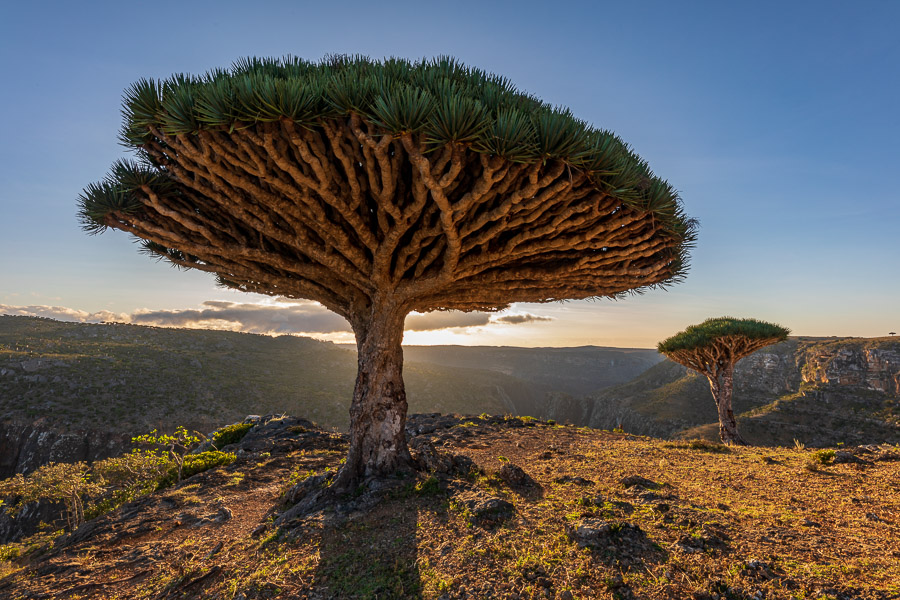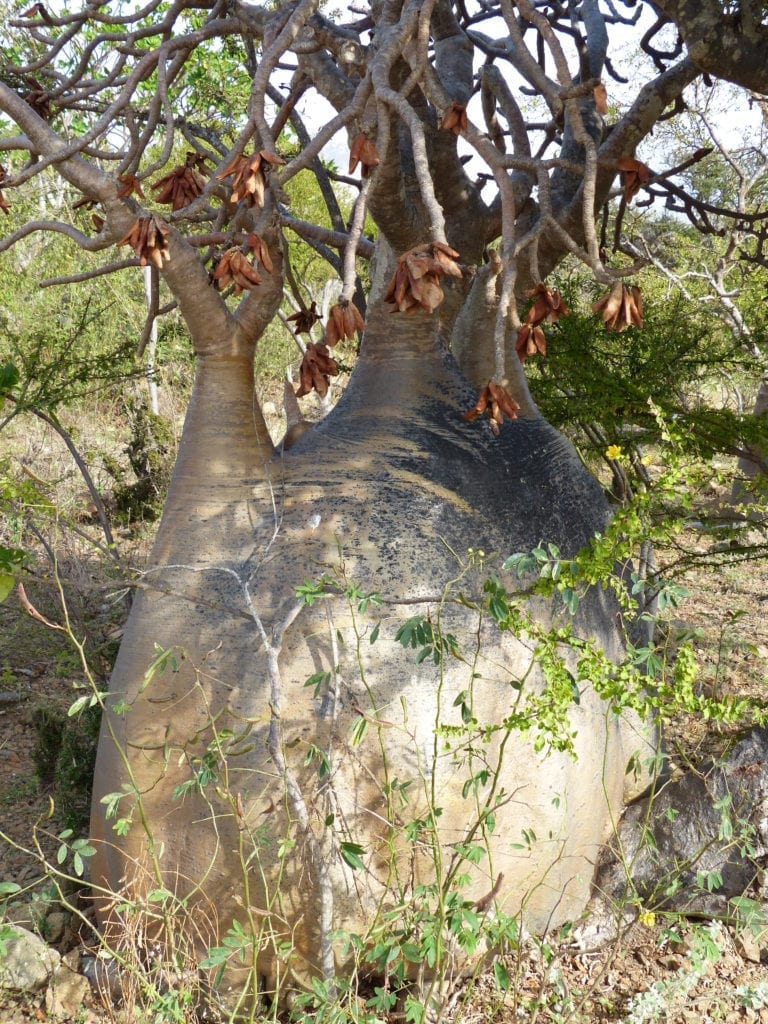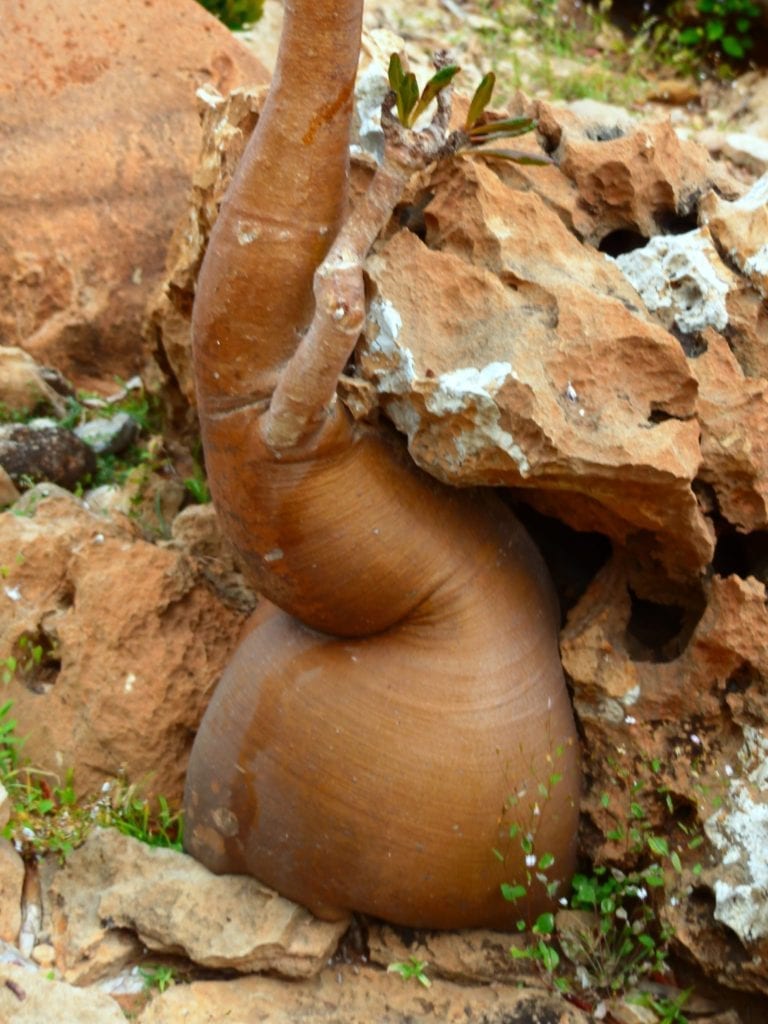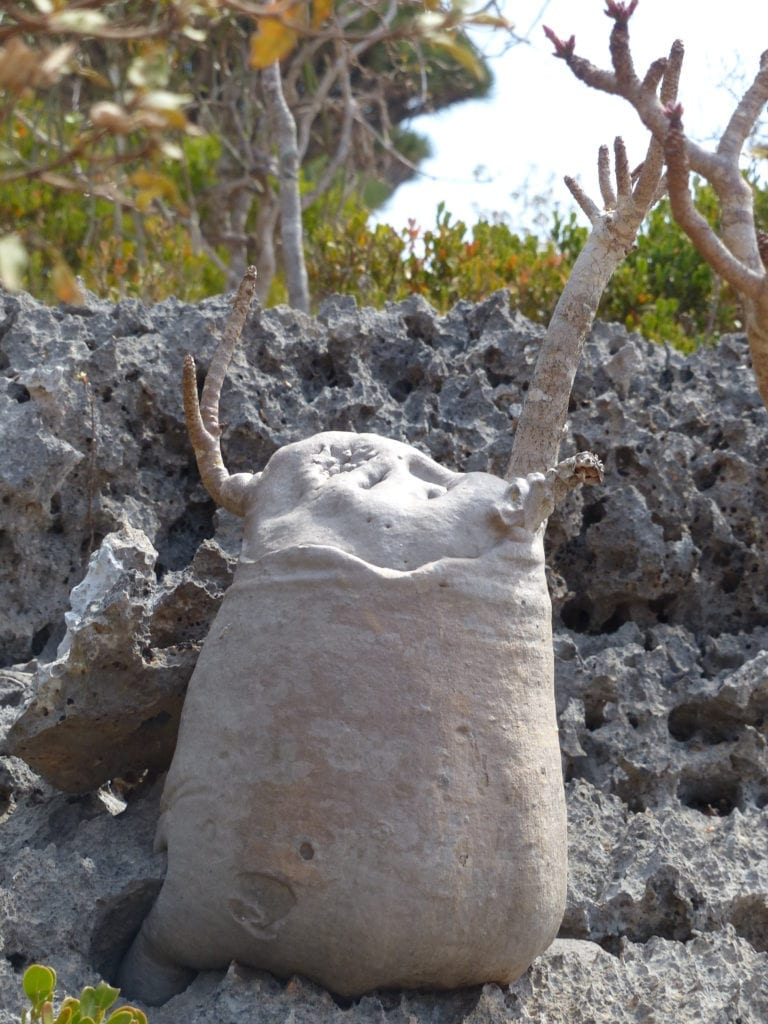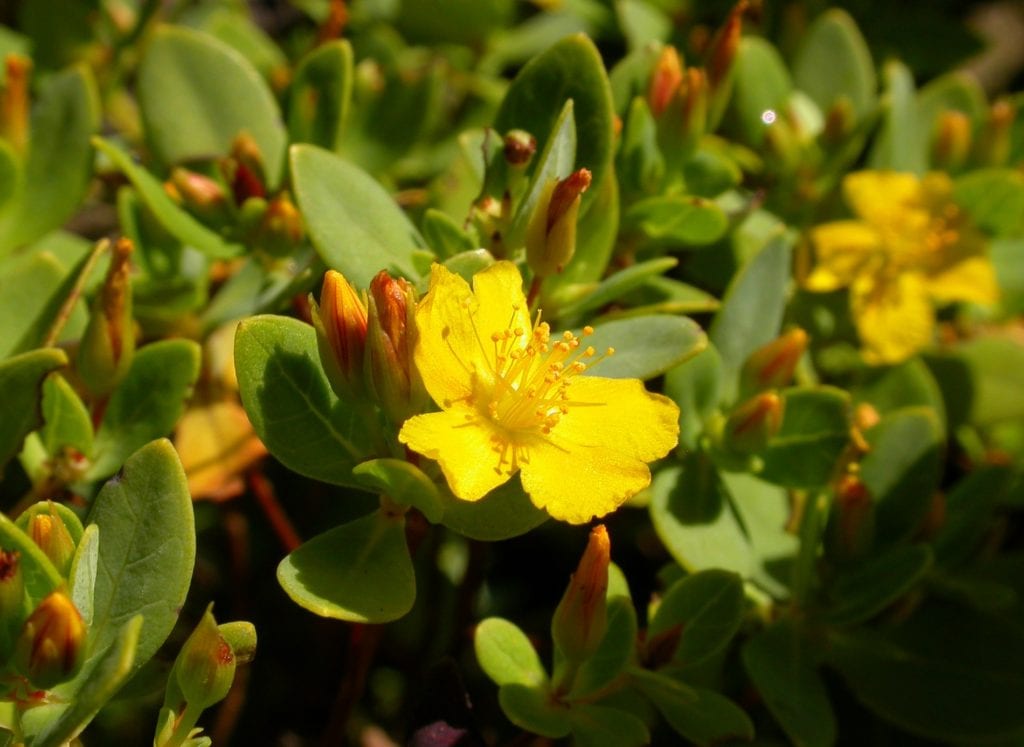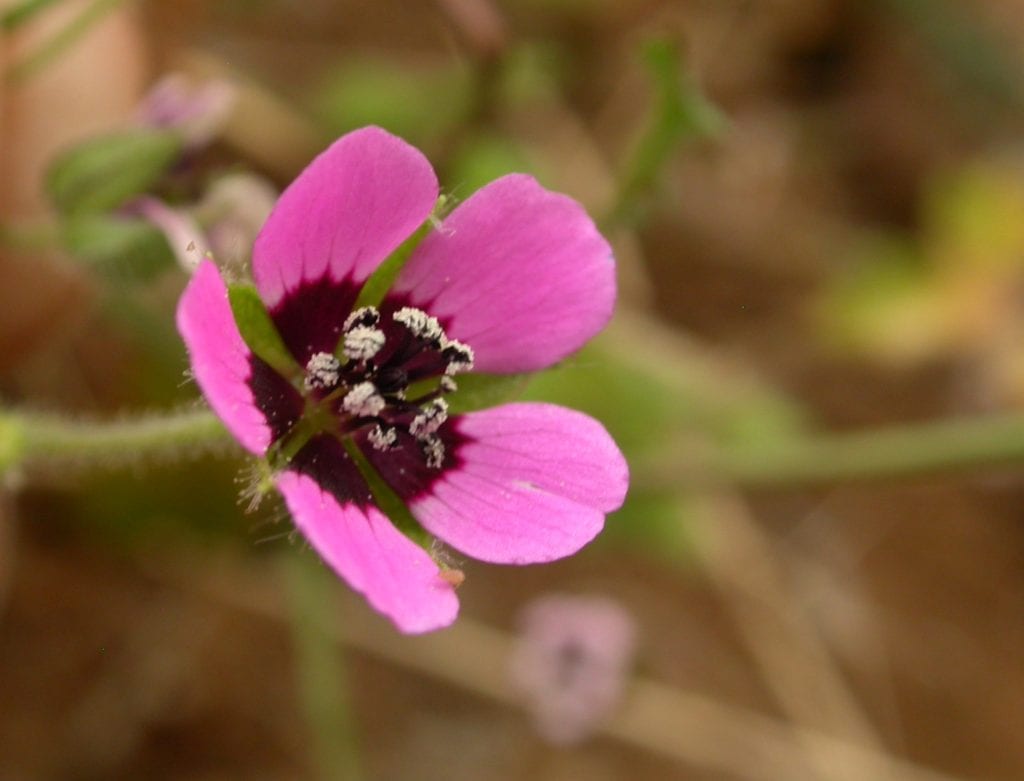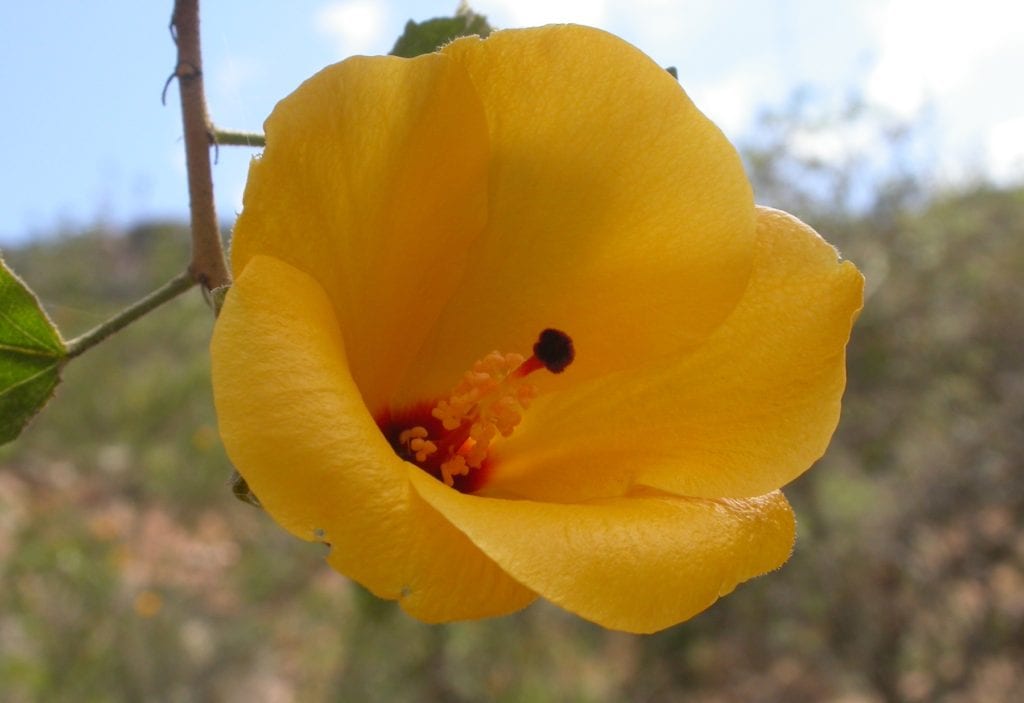Socotra is known for its natural environment. It’s the reason it’s a UNESCO World Heritage Site, and it’s why savvy travellers want to go there. On the island, 830 vascular plant species are recognised and, of these, 322 (39%) are endemic (ie: found nowhere else on earth), giving it a level of plant endemism comparable with some of the most isolated and diverse islands anywhere.
However, most of Socotra’s endemic species have been known to science for less than 140 years. Although the archipelago’s early involvement in the incense trade was first documented almost two millennia ago, scientific exploration of the island only started in the mid 19th century. The first major botanical expedition took place in 1880, led by Isaac Bayley Balfour, whose subsequent Botany of Socotra – published in 1888 – described over 200 species and 20 genera new to science, many of them endemic to the islands.
Balfour later became Regius Keeper and Queen’s Botanist at the Royal Botanic Garden Edinburgh (RBGE) where he remained until 1922, thus creating a relationship between the RBGE and Socotra that still continues actively today.
Dragon’s blood trees
Most famous of all Socotri flora is, of course Dracaena cinnabari – the Socotran dragon’s blood tree. Related to other dragon trees found in the Canary Islands, Madeira, Cape Verde, Morocco, Arabia and Africa, and southeast Asia, the Socotri species, however, is the only one known to form extensive woodland. It is threatened through climate change and land management practices leading to overgrazing.
All visitors will be taken to Firmihin Forest to see the trees since they are all mature and large, thus photogenic, but in fact they are threatened through over-maturity and a lack of regeneration. You have to go to the steep slopes of the high Haggeher Mountains to see woodland with a good age structure and young plants.
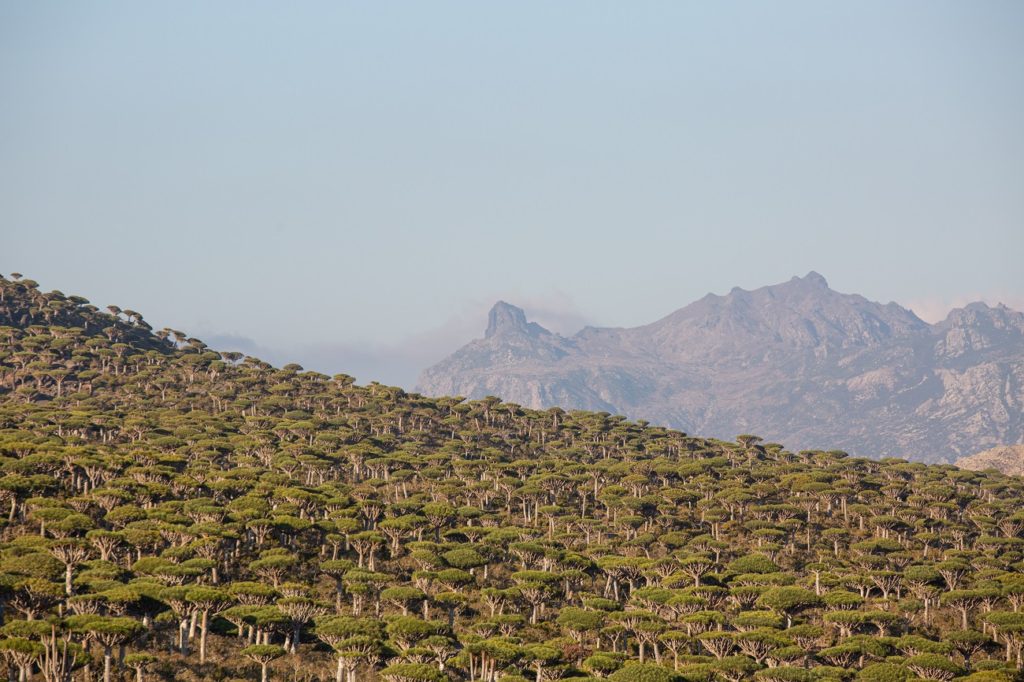
It is widely believed that an excess of goats eat the young seedlings, preventing regeneration, and while this is true to an extent, the trees are also suffering from a drying of the climate and a reduction in the monsoon mists and fogs on which they depend for moisture – hence their abundance at higher altitudes where they will no doubt survive another climatic onslaught.
Bottle trees
Apart from the iconic dragon’s blood trees, the most recognisable components of the landscape are what can be termed bottle trees, a name applied to several unrelated species – the cucumber tree (Dendrosicyos socotranus) being one. It can attain large dimensions, has a massive swollen trunk and is relatively widespread, despite the fact that it is extensively lopped for fodder and has been almost cleared in some areas.
Interestingly, it belongs in the family Cucurbitaceae, the gourd family, and is the only tree species in a family which is predominantly made up of climbers and vines. Molecular research has determined that this tree is an ancient lineage – existing prior to the opening up of the Gulf of Aden and the separation of Socotra as an island. If it previously grew on what is now mainland Arabia, it is no longer there and has likely been isolated on Socotra for the entire lifetime of the island.
Other bottle trees include Adenium obesum subsp. sokotranum, also known as the desert rose owing to its large and attractive pink flowers, and Dorstenia gigas or Socotran fig which has the appearance of some magical plant from an ancient herbal remedy with its clusters of wrinkled leaves and swollen stems.
Flowers and succulents
There are many endemic succulent species as well, and several orchids. The most remarkable succulent is perhaps Duvaliandra dioscorides, an asclepiad, which grows in a very specialised and rare niche – dry and exposed south-facing slabs of granite in an otherwise wet habitat. This is an unusual place to find a succulent plant, and it is critically endangered due to having extremely low numbers in a very small area – the details of which are deliberately kept secret by local communities.
Socotra also harbours a range of endemic plants the names of which will be familiar to many gardeners, as related species are often grown in the horticulture trade. These include hibiscus (of which the endemic species have irritant hairs on their leaves) Hypericum, Pelargonium, Geranium, Exacum – the Persian violet – and, of course, Begonia socotrana.
Hypericum scopulorum Geranium biuncinnatum Hibiscus dioscoridis
This latter was collected in 1880 by Isaac Bayley Balfour and cultivated at the Royal Botanic Garden Edinburgh. It is the only known begonia that is winter-flowering in nature and, as such, all winter-flowering begonias globally are in some way derived from this founding collection.
Another begonia species is found only on a small cliff face on the tiny island of Samha – but this is not winter-flowering despite being closely related.
Local uses
Many of the plants on Socotra are used by the Socotri people for a wide variety of purposes; in fact the inhabitants are very adept at finding a plant to fulfil a certain function. Some of these endemic species are also well known outside the islands – for example aloes that have been harvested for their bitters, frankincense trees whose resin was traded in antiquity, and of course the dragon’s blood tree which is the most iconic of all Socotri plants. The sap has a wide range of uses, including medicinal (see Nicole Smoot’s Impressions of Socotra for more).
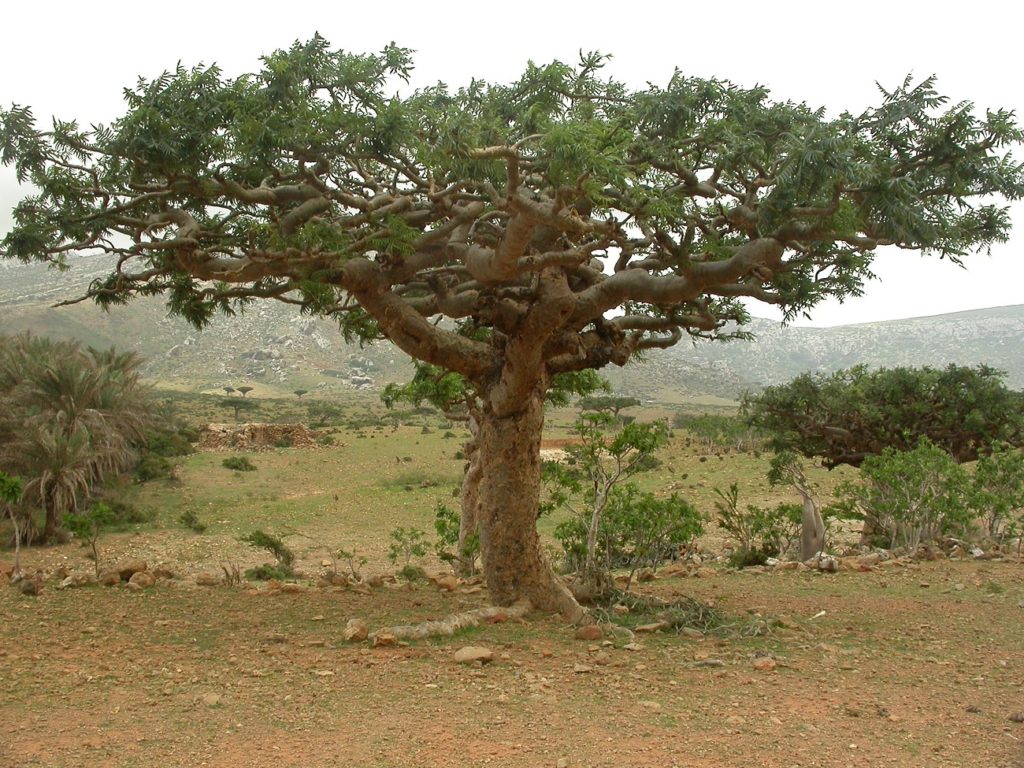
Frankincense is harvested from the genus Boswellia. There are only about 20 species globally, with at least eight species on Socotra (the remainder are in either northeast Africa, southern Arabia or the Indian subcontinent) and as such it is a centre of diversity for the genus. Extensive woodlands can be seen in various parts of the island, and a series of species is found only on cliffs.
They are an actively evolving group showing great variation, and are the focus of much research both historically and currently, as frankincense has become an extremely valuable commodity both in traditional markets and also in developing health, wellbeing and aromatherapy products.
Many frankincense populations are globally under threat, and this could easily apply to species on Socotra should supplies start to run out elsewhere. The species on Socotra have been physically harvested, ie: they were never cut to induce resin production, but rather the resin was gathered from natural wounds and exudates. If this practice were to change then many of the species on Socotra would quickly become threatened through over-harvesting which causes tree mortality and a reduction in flowering and fruiting.
More information
Read more about the Yemeni island of Socotra and its endemic flora and fauna in our guidebook:
A Biodiversity Scientist at the Centre for Middle Eastern Plants, part of the Royal Botanic Garden Edinburgh, Alan Forrest started his career with a range of conservation studies using molecular techniques in the UK and Spain. He is project manager of the Soqotra Heritage Project, and currently works more widely on conservation projects in Socotra, the Arabian Peninsula and central Asia.
